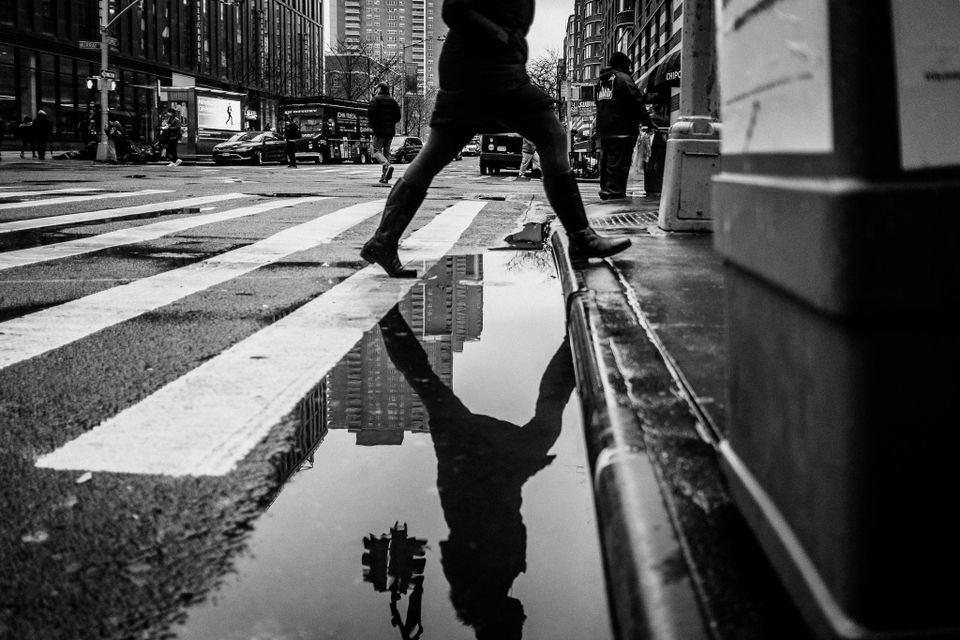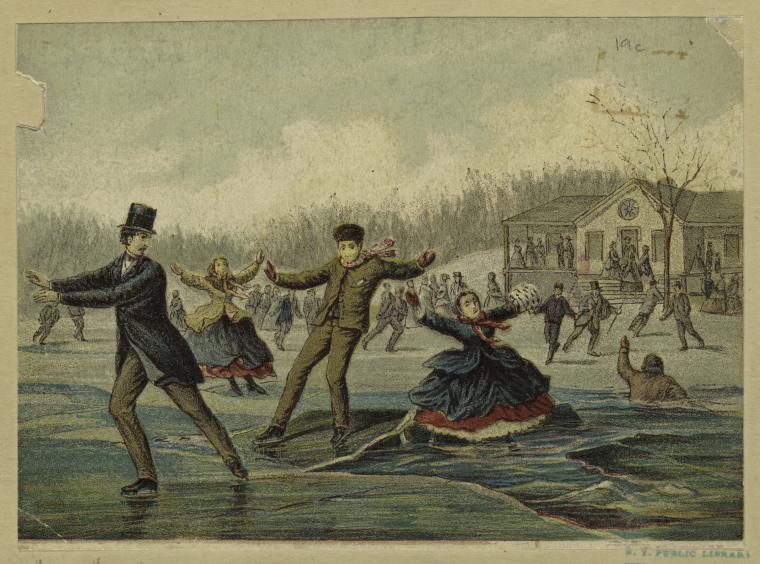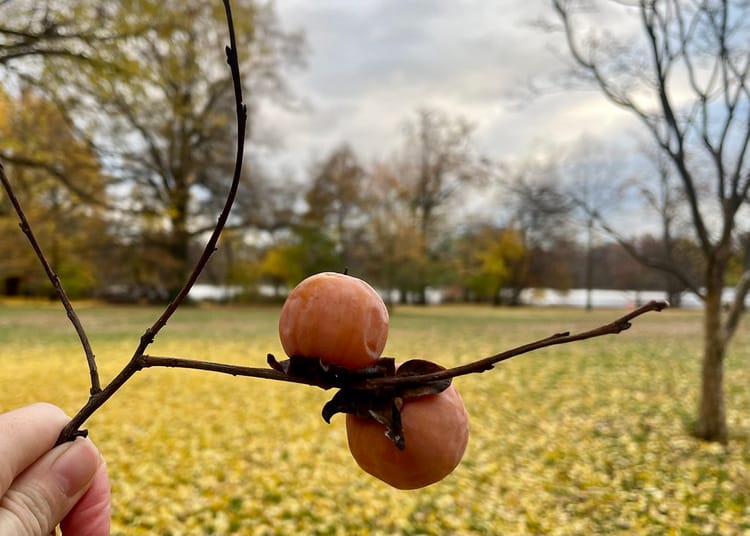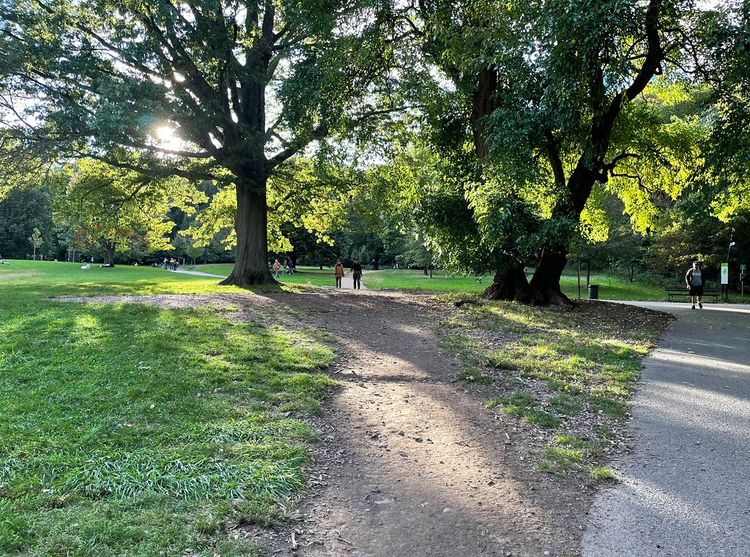Water on the Street Forms Chasms of Unfathomable Depth

Sure, it’s winter, but it’s sunny. You are well bundled. The freezing rain of a few days ago feels long gone and now you are outside again, escaping the stifling radiator heat of your 1BR. The cold on your cheeks is a gift. This winter thing isn’t so bad, you say. I like living in a place with seasons, you remind yourself. Spring isn’t far away. You survey your surroundings with a fond smile and boldly stride into the crosswalk.
GAHHHHH. An icy crocodile sinks its teeth into your Achilles tendon. GAHHHHH, you shriek again to the consternation of passers-by. What you thought was a mere shimmer of a rainstorm remnant pooling against the curb was, in reality, a deep Arctic kettle pond. Limp-hop across the intersection. Waffle over the cost-benefit analysis of returning home for a change or stopping into CVS for emergency replacement socks.
As our city has grown, so have its puddles. (Although “puddle,” with its smack of a nursery rhyme, is perhaps too kind a word for the raw, glacial sink you have just encountered.) Roads and sidewalks and parking lots and rooftops leave nowhere for the water to go—more than 70% of the city is an impermeable surface. Sewers clog with every big rain, and big rain comes more often with climate change.
But you are not thinking of infrastructure right now because you are pissed and reconsidering the whole seasonal hype. Once your foot is warm and dry you will be in a better frame of mind.

- Since 1903, the Coney Island Polar Bear Club—founded by eccentric fitness fanatic Bernarr Macfadden—has encouraged plunging into cold water. Attendance peaks at the annual New Year’s Day swim that regularly draws hundreds, but the club members take invigorating strokes in the frigid Atlantic each Sunday from November to April. The Museum of the City of New York has archival photos of intrepid snowy day swimmers from across the years.
- While ice skaters now flock to the rinks around the city, earlier New Yorkers had to take to the frozen waters. In Brooklyn’s Prospect Park, this included the small pond alongside Lullwater Bridge. The 1906 cast iron bridge has an underside of floral details that would have been visible to the skaters passing below. On days when the water is still you can see them in the reflection.
- Visit Green-Wood Cemetery in Brooklyn to marvel at 19th-century gutter design. Smooth rocks from the excavation of the glacial hills were collected to line the roads in the late 1830s and many of these cobbled gutters are still in situ.




